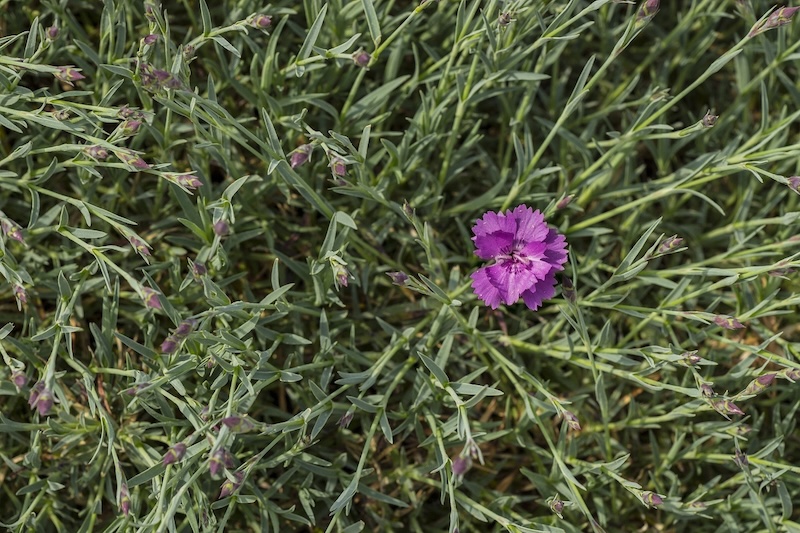Dianthus are flowering plants that grow as perennials in warm zones but are often planted as annuals in other areas. Various diseases, including fungal and bacterial infections, can impact Dianthus. Some diseases are severe and can cause death, but others are treatable. It is essential to identify a diseased Dianthus to contain the outbreak and prevent future issues.

Dianthus Vascular Wilt
Vascular wilt is caused by different fungi that attack the vascular system, which is how the plant transports water and sap through the stems and foliage. Infected plants slowly die as water and nutrients are cut off to certain parts of the Dianthus, and the disease overtakes the plant.
Identifying Vascular Wilt
Dianthus plants infected with vascular wilt slowly wither before succumbing to the disease. Leaves lose their luster and turn yellow before wilting and dying. Lower leaves are the first to wilt, and the damage progresses through the rest of the plant.
Treating Vascular Wilt
Treating vascular wilt is challenging because fungicides applied to the plant's exterior do not help. Prevention is the best form of treatment. Keep plants healthy by providing regular water in the summer months and ensuring the planting site drains well. Remove an infected Dianthus and destroy the plant to prevent the spread of the fungal infection. Also, remove and replace the soil because the fungus can live in the ground and infect future plantings.
Dianthus Anthracnose
Anthracnose is a fungal disease that can stunt the growth of a Dianthus and ultimately kill the plant if left unchecked. The fungus slowly engulfs the entire plant, killing vegetation from the bottom and working its way to the top.
Identifying Anthracnose
A Dianthus infected with anthracnose will develop spots on lower leaves. With time, those leaves will turn brown and wilt. The dead vegetation will later develop black spots. The irregular-shaped black spots are the fungus reproducing. This fungal infection will spread through the plant and can be fatal.
Treating Anthracnose
Treat anthracnose on Dianthus by removing infected foliage at the first sign. Apply a fungicide to kill the fungus and contain the spread. It may take several applications of fungicide to resolve the issue entirely, so reapply every couple of weeks.
Damp conditions, especially heavy rainfall, can contribute to an anthracnose outbreak. Properly space plants to allow adequate air circulation around foliage and avoid overhead watering when possible. Apply a thin layer of mulch around the base of the plant to prevent water from splashing onto the plants.
Dianthus Disease Chart
| Disease | Identifying | Treating |
|---|---|---|
| Vascular Wilt | Wilting, dying foliage starting at the lower leaves | Prune/discard stems |
| Anthracnose | Leaf spots followed up by wilting, drying foliage | Proper air circulation & fungicides |
Sources:
"Carnation." Department Plant Pathology & Microbiology at Texas A&M University. plantdiseasehandbook.tamu.edu.
"Dianthus Anthracnose." Purdue University. purduelandscapereport.org
 |
Author Alison Cotsonas - Published 12-22-2023 |
